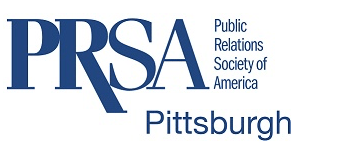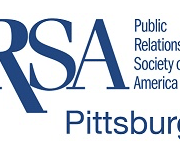[ This article originally appeared on The Way, Sprinklr’s content hub. As one of PRSA Pittsburgh’s sponsors, each month Sprinklr will be delivering you with some insights into how you can use technology to make your marketing more efficient and effective. ]
When social media came onto the scene, not everyone gave it the credit that it deserved, but some rolled up their sleeves and got to work.
Good companies quickly realized what it meant for them – that they needed to engage customers in a personalized way on all social platforms. Better companies figured out what it meant for customers – that they expected brands to deliver these personalized experiences more efficiently than before. The best companies did all that and more – they used social to drive more human, intuitive, and seamless customer experiences at scale, and they rewrote the rule book.
Here are a few ways that big brands are using social to improve customer experience and increase sales.
Use Proactive Customer Care as an Upsell Opportunity
Customer care used to be siloed and reactive. Customers would buy a product, and brands wouldn’t interact with them until they placed a formal customer service complaint or bought something new.
But the best customer care today is quite the opposite – it involves listening to, and engaging with customers across all of the social channels.
Take, for example, a large consumer athletics company – within minutes of a runner complaining on Facebook about her shoes, the care team is alerted. The team can see that the customer is preparing for a marathon, and that she’s been a loyal shopper and advocate for quite some time.
They take this information, look at social chatter around the race, and learn that there’s rain on the forecast. When they engage the customer, not only can they offer solutions to her shoe problem, they can also offer discounts and suggestions about gear for running races in the rain. These suggestions lead to the customer purchasing additional gear worth 3x the original shoes.
What starts as a negative situation becomes a value-add experience for the customer, who will likely amplify her brand love on social and post pictures in her new gear on race day.
Leverage Advocates to Speak on Your Behalf
Brands once had control over what was said about them. Now, people prefer to hear what their peers have to say. Customers would rather turn to advocates for authentic and genuine information than be served ads.
This departure from traditional methods has an upside – the reach can be far greater. With 116 million followers on Instagram, Selena Gomez has over 40x more followers than People Magazine, and nearly 60x more than Us Weekly. The potential of using an influencer like Ms. Gomez isn’t lost on brands, but they do struggle with how to select influencers and cultivate relationships.
Some are turning to technology to identify and engage with brand advocates that are loved by customers. A large consumer company, for example, follows individuals who are vocal and influential among their customers. They monitor customer sentiment around these individuals to see which are the most loved.
They build relationships with those individuals and start marketing together. This allows them to reach more customers than they could on their own, in a way that feels less promotional to consumers than traditional advertising.
Unite Siloed Teams to Engage Authentically in Real Time
Gone are the days when posting ads was all you had to do to drive sales. Pushing brand content out into the digital world and leaving it there doesn’t cut it anymore.
Consumers increasingly expect to have in-the-moment, two-way conversations with brands on their preferred social channels. Smart companies track social mentions, and engage with customers in a personalized way.
A telecommunication company abandoned clunky manual processes, and brought down response times from weeks to minutes. It streamlined technology to eliminate over a dozen different systems and now coordinates across functional teams and local partners in multiple geographies through one unified platform. As a result, disparate teams have a unified view of their customers and are able to engage with them authentically in real time.
Automate and Integrate Advertising to Increase Agility
Consumers see more online advertising than ever before, but the old CMO adage, “I know 50% of my ads work…just not which 50%” prevails.
In response, many companies are learning that it’s not about large campaigns based on volume, but many shorter, smaller, more relevant initiatives shaped by real-time customer feedback.
A leading technology company with a 10 million dollar advertising spend on Black Friday uses a Social Command Center to gain insights, identify key audience segments, and hone real-time bidding to maximize business results. They have integrated advertising technology that automatically kills low performing ads, and targets look-alike audiences when ads are successful.
It’s the difference between serving 100 people a day-long buffet, and giving four groups of 25 their favorite lunch. The outcome is that companies spend more efficiently on advertising, because customers are only served ads that they’re interested in seeing.
Use Automated Technology to Localize Social Presence at Scale
Another big challenge for companies with a large sales force and distributed partners lies in simultaneously scaling a social strategy, and keeping content both personalized and relevant to local audiences.
Ultimately, irrelevant content won’t be effective. But getting approval for every outbound post can leave local agents in social media limbo – unable to get anything done in a timely manner.
As a solution, some companies have launched social portals with content that agents can quickly localize, thereby reserving valuable time with customers. Others in highly regulated industries like insurance and finance closely monitor activity with automated rules and workflows to ensure agents do not overstate product attributes, and adhere to industry regulations to avoid company liability or a crisis.
Thus customer engagement can happen in real time, employees see increased efficiency in content creation and distribution, and brands can be sure that only approved language and assets end up online.
Create End-to-End Shopping Experiences on Social
Many customers do product research before stepping into a store, and compare prices on the shelf with what they see on their mobile devices. Consumers are increasingly turning to social channels to shop and companies have begun to realize that being in the “right time and place” means bringing the store to the customer.
A large retail brand supports the entire customer journey on social. Their ads to new customers include social buy buttons. Products can be purchased without the customer leaving the platform, and delivery dates can be tracked in app as well. Any customer care needs can be addressed through the same platform, and customers can be alerted about upcoming sales.
This type of end-to-end social shopping experience decreases friction in the buyer journey, making the customer’s life much easier.
—
These are just a few examples of how big companies are using social media to drive business objectives. But there’s an abundance of stories of companies providing incredible customer experiences waiting to be told.
Getting to a place where you’ve mastered putting your customers first through social will allow you to be prepared for the next big thing. When it comes, you can roll up your sleeves, get to work, and keep the foundation of your company – your customers – happy.
If you’re not quite there yet, begin by reviewing your social customer journey, and reconsider your strategy with unrelenting emphasis on the customer. Everyone else will follow suit – because they’ll have to.
The author, Dennis Chen, is VP of Strategy and Transformation at Sprinklr based in Singapore. He has held leadership roles at BCG, IBM and Cisco across Asia Pacific, United States, and Europe.


















